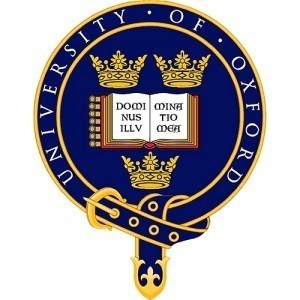Photos of university / #oxford_uni
The MSt in Cuneiform Studies at the University of Oxford offers a comprehensive exploration into the ancient civilization of Mesopotamia through the study of cuneiform writing, one of the earliest systems of written expression. This programme is designed for students with an interest in ancient languages, archaeology, history, and religious studies, providing a rigorous academic environment to develop expertise in deciphering, analyzing, and understanding cuneiform inscriptions. The course covers a wide range of topics, including the history and development of cuneiform script, the linguistic structure of Sumerian and Akkadian languages, and their respective contexts within Mesopotamian society. Students will engage in detailed textual analysis, learn to read and translate original cuneiform tablets, and gain insight into the cultural, political, and religious aspects of ancient Mesopotamia. The programme combines interdisciplinary approaches, integrating archaeological evidence, philological techniques, and historical analysis to give students a well-rounded understanding of the material. Taught by leading scholars in Assyriology and Near Eastern Studies, the course emphasizes both practical language skills and interpretative analysis, preparing graduates for research careers, academic roles, or specialized work in museums and archives. The programme also offers opportunities for fieldwork, attending seminars, and participating in collaborative projects. With a strong emphasis on independent research, students are encouraged to pursue individual interests within the field. The programme typically spans one year for full-time students and offers flexible options for part-time study. Graduates of this programme will be equipped with the skills necessary for advanced research and will contribute to the ongoing study and preservation of ancient Near Eastern cultures. Overall, the MSt in Cuneiform Studies at Oxford provides an exceptional environment for deepening knowledge of one of history’s most influential civilizations through the lens of its writing systems.
The range of options available makes the MPhil Cuneiform Studies suitable both for graduates who have already studied Cuneiform, and for those with no previous experience in the field.
If you have a Cuneiform background, you will be able to build on your previous studies and gain specialised expertise. If you have graduated in another discipline, you will be able to convert to Cuneiform studies through a course that offers a progression from beginning the Akkadian and Sumerian languages to individual research. The course will provide the opportunity to develop a research area of your choice and elements of the course will be tailored to your individual interests.
The study of Akkadian and Sumerian, the two principal ancient languages of Mesopotamia, lies at the heart of the course. The principal focus throughout is on detailed familiarity with the primary sources, studied in the original languages and scripts. The course is designed to equip you with a sound knowledge of Akkadian and Sumerian grammar, vocabulary, and cuneiform script, as well as developing your ability to tackle published, but unedited Cuneiform texts.
Familiarity with the secondary literature and study aids such as dictionaries and sign lists, as well as historiographical and literary-critical approaches, are integral to the course. In addition to this textual focus, the cultures, history, and archaeology of Mesopotamia and neighbouring areas are fundamental course components. You will have the opportunity to develop your skills working with ancient Near Eastern artefacts, including cuneiform tablets, in the Ashmolean Museum.
The Cuneiform world is also studied in a wider context. Options include the Egyptian, Biblical, and Classical worlds, as well as the later Near East. The MPhil thesis will provide you with the opportunity to identify and design a cuneiform-related research project and to develop advanced research skills.
From the beginning of the course, you should expect to be engaged in academic work for a minimum of thirty-five hours a week during full term and you will need to do a considerable amount of work during the vacations. The course is taught through a mixture of classes (mainly language classes), lectures, and seminars, with some tutorials. Tutorials normally consist of a one-to-one discussion with a tutor based on written work produced by the student. The syllabus is flexible and designed to meet the needs and interests both of those new to the field and of those who have studied cuneiform at undergraduate level.
You will have a qualifying examination at the end of your first year, and a final examination at the end of the second.
Applicants are normally expected to be predicted or have achieved a first-class or strong upper second-class undergraduate degree with honours (or equivalent international qualifications), as a minimum, in any subject.
For applicants with a degree from the USA, the minimum GPA sought is 3.5 out of 4.0.
If you hold non-UK qualifications and wish to check how your qualifications match these requirements, you can contact the National Recognition Information Centre for the United Kingdom (UK NARIC).
You will need to demonstrate a working knowledge of French and German by the end of the first year of the course.
No Graduate Record Examination (GRE) or GMAT scores are sought.
Other appropriate indicators will include:
- Official transcript(s)
- CV/résumé
- Statement of purpose/personal statement:500 words
- References/letters of recommendation:Three overall, of which at least two must be academic
The University of Oxford offers a comprehensive range of financing options for students enrolled in their Cuneiform Studies programmes. Funding opportunities include scholarships, bursaries, and grants specifically designed to support postgraduate students undertaking advanced research in Assyriology, Sumerology, and related fields. Prospective students are encouraged to explore funding from the university’s central scholarship schemes, which are available based on merit, need, or both. Additionally, there are departmental awards and external funding sources that can provide significant financial support. The Oxford-Humanities Cultural Policy Studies Bursary, for instance, offers financial assistance to students demonstrating excellence and need in the humanities disciplines, including Cuneiform Studies.
Students pursuing these programmes are also eligible to apply for various research grants from national and international organizations that support archaeological and language research projects. The university’s financial aid office provides personalized advice to guide applicants through the application procedures for these funding options. Moreover, since Cuneiform Studies often involve fieldwork and extensive research expenses, students are encouraged to seek external grants from archaeological foundations, cultural heritage organizations, and government agencies offering specialised funding for academic research in ancient Near Eastern studies.
Full funding opportunities, including tuition fee waivers and stipends, are occasionally available for exceptional candidates, particularly at the doctoral level. Prospective students should consult the university’s official website and contact the Graduate Admissions Office for the most current information on application deadlines and qualification criteria. It is also advisable to regularly check for new scholarships or funding initiatives that may become available throughout the academic year. Budget planning is an essential component of application preparation, and students are advised to consider additional costs such as travel, accommodation, and research materials when assessing their financial needs. Overall, Oxford University provides a robust framework of financial support designed to enable talented students to focus fully on their academic pursuits in Cuneiform Studies without undue financial burdens.
The University of Oxford offers a specialized programme in Cuneiform Studies, focusing on the ancient writing system used in Mesopotamia. This programme provides students with a comprehensive understanding of the history, development, and decipherment of cuneiform script, which is one of the earliest forms of written expression. Throughout the course, students engage deeply with primary texts and artifacts, gaining skills in reading and interpreting cuneiform inscriptions inscribed on clay tablets dating back to the Sumerian, Akkadian, Assyrian, and Babylonian civilizations. The programme combines linguistic training with archaeological and historical contexts, allowing students to explore the cultural, political, and social aspects of ancient Mesopotamian societies.
The coursework includes advanced language modules in Sumerian and Akkadian, alongside palaeography, script analysis, and digital cuneiform transcription techniques. Students have the opportunity to work directly with the university’s extensive collections of cuneiform tablets and contribute to ongoing research projects. The programme also emphasizes the interdisciplinary study of Mesopotamian history, religion, law, and literature to foster a holistic understanding of the civilization that used cuneiform writing. Graduates of this programme often pursue careers in academic research, museum curation, archaeological excavation, or advanced study in Assyriology and Near Eastern languages.
The programme is delivered through a combination of lectures, seminars, practical workshops, and individual tutorials with leading experts in Assyriology. It is designed for students with a strong background in linguistics, history, or archaeology, often requiring prior knowledge of ancient languages or archaeological methods. Students benefit from Oxford’s collaborative academic environment and access to world-class library resources, including specialized collections related to ancient Near Eastern studies. Successful completion of this programme demonstrates expertise in the decipherment and interpretation of cuneiform texts, providing a foundation for further academic research or professional engagement with the ancient Near East.

